Imagine standing before a colossal stone monument built over 4,500 years ago — taller than most buildings even today, aligned with the stars, and still shrouded in mystery. That’s the experience of gazing at the Great Pyramids of Giza in Egypt. These awe-inspiring structures are not just architectural marvels, but also windows into one of the world’s most fascinating civilizations. Often called one of the Seven Wonders of the Ancient World, and the only one still standing, the pyramids continue to captivate travelers, archaeologists, and history lovers from around the globe. Let’s dive deep into the story, secrets, and enduring legacy of the Pyramids of Giza. A Brief History of the Pyramids The Great Pyramids were constructed during Egypt’s Old Kingdom (circa 2600–2500 BCE), under the Fourth Dynasty. Their purpose? To serve as monumental tombs for the Pharaohs, who were considered divine rulers. The Giza plateau is home to three main pyramids: Together with the Great Sphinx, they form one of the most iconic landscapes in world history. The Great Pyramid of Khufu The largest and most celebrated, the Great Pyramid of Khufu originally stood at 146.6 meters (481 feet) tall, though erosion has reduced it slightly. For over 3,800 years, it was the tallest man-made structure on Earth, a record it held until the 14th century. Constructed from over 2.3 million limestone blocks, each weighing between 2 to 15 tons, the pyramid is a testament to the ingenuity of ancient Egyptian engineering. Even today, archaeologists marvel at how such …
The Great Pyramids of Giza: Timeless Wonders of Ancient Egypt
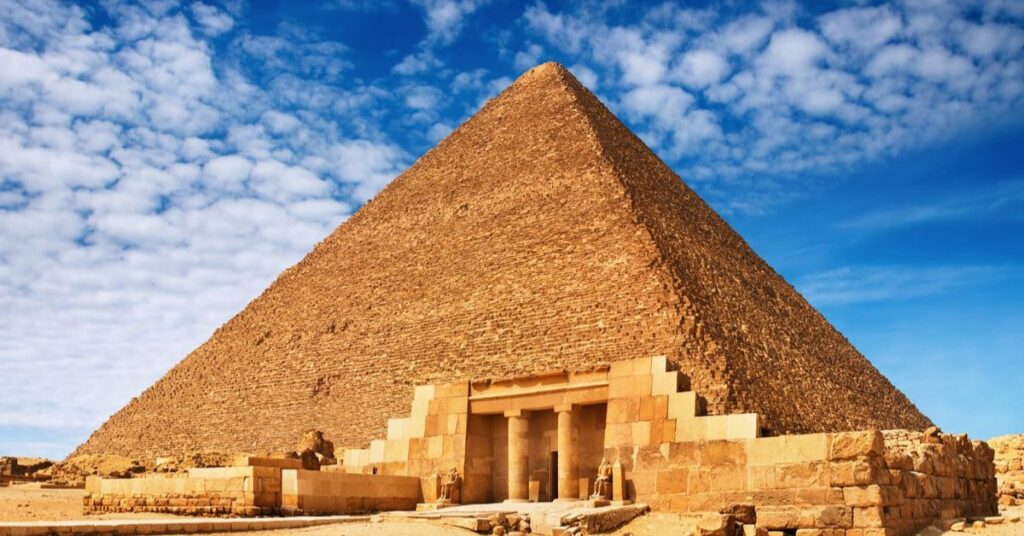
Imagine standing before a colossal stone monument built over 4,500 years ago — taller than most buildings even today, aligned with the stars, and still shrouded in mystery. That’s the experience of gazing at the Great Pyramids of Giza in Egypt. These awe-inspiring structures are not just architectural marvels, but also windows into one of the world’s most fascinating civilizations.
Often called one of the Seven Wonders of the Ancient World, and the only one still standing, the pyramids continue to captivate travelers, archaeologists, and history lovers from around the globe. Let’s dive deep into the story, secrets, and enduring legacy of the Pyramids of Giza.
A Brief History of the Pyramids
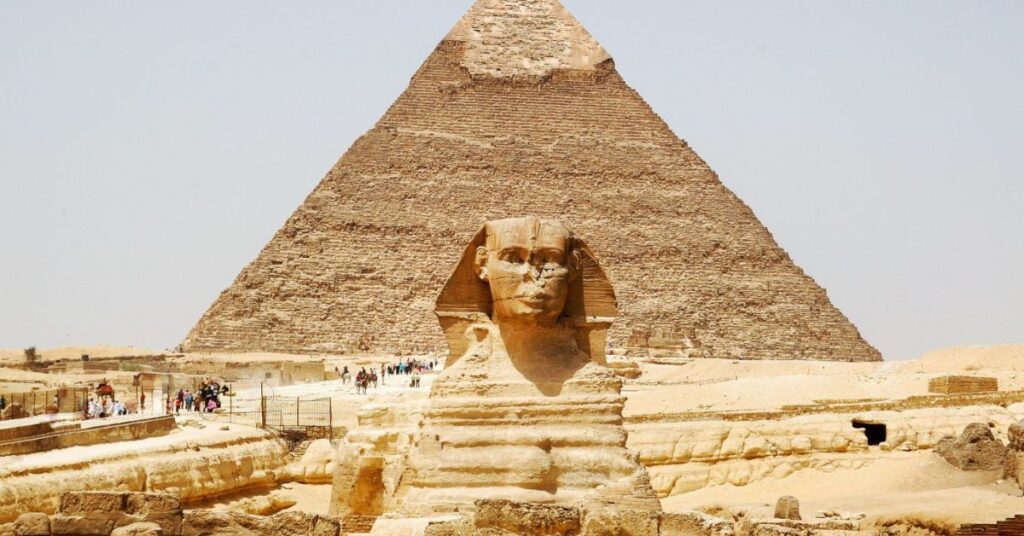
The Great Pyramids were constructed during Egypt’s Old Kingdom (circa 2600–2500 BCE), under the Fourth Dynasty. Their purpose? To serve as monumental tombs for the Pharaohs, who were considered divine rulers.
The Giza plateau is home to three main pyramids:
- The Great Pyramid of Khufu (Cheops) – the largest and most famous.
- The Pyramid of Khafre – slightly smaller, but appearing taller because it sits on higher ground.
- The Pyramid of Menkaure – the smallest of the trio, but still monumental in scale.
Together with the Great Sphinx, they form one of the most iconic landscapes in world history.
The Great Pyramid of Khufu
The largest and most celebrated, the Great Pyramid of Khufu originally stood at 146.6 meters (481 feet) tall, though erosion has reduced it slightly. For over 3,800 years, it was the tallest man-made structure on Earth, a record it held until the 14th century.
Constructed from over 2.3 million limestone blocks, each weighing between 2 to 15 tons, the pyramid is a testament to the ingenuity of ancient Egyptian engineering. Even today, archaeologists marvel at how such precision was achieved without modern tools.
Engineering Genius of the Ancient Egyptia
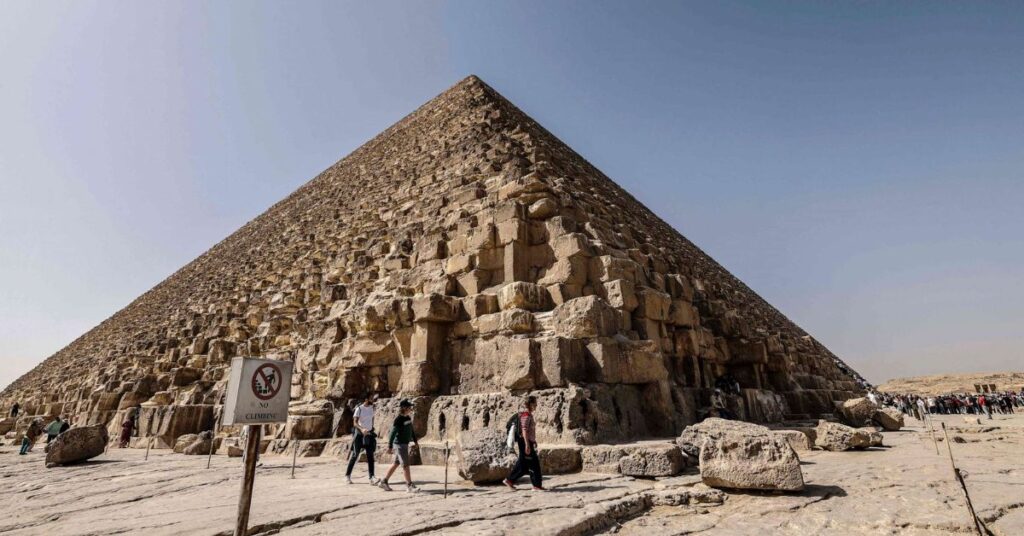
How did ancient Egyptians build something so massive without cranes or machinery?
Theories suggest:
- Ramps: Long, straight or circular ramps may have been used to drag stone blocks upward.
- Rollers and sledges: Logs or lubricated sledges could help transport heavy stones.
- Manpower: Recent evidence shows that a skilled labor force, not slaves, built the pyramids. Workers were organized into teams, provided with housing, food, and medical care.
The near-perfect alignment of the pyramids with the cardinal points and celestial bodies like Orion’s Belt shows the Egyptians combined architectural skill with advanced astronomical knowledge.
The Purpose of the Pyramids
At their core, the pyramids were royal tombs designed to ensure safe passage into the afterlife. Egyptians believed the pharaohs would ascend to the heavens and join the gods, particularly Ra, the sun god.
Inside the pyramids, passageways and chambers were filled with treasures, food, and belongings to serve the pharaoh in the next world. Though most treasures were looted in ancient times, the pyramids remain a symbol of eternal life and divine kingship.
The Sphinx: Guardian of the Plateau
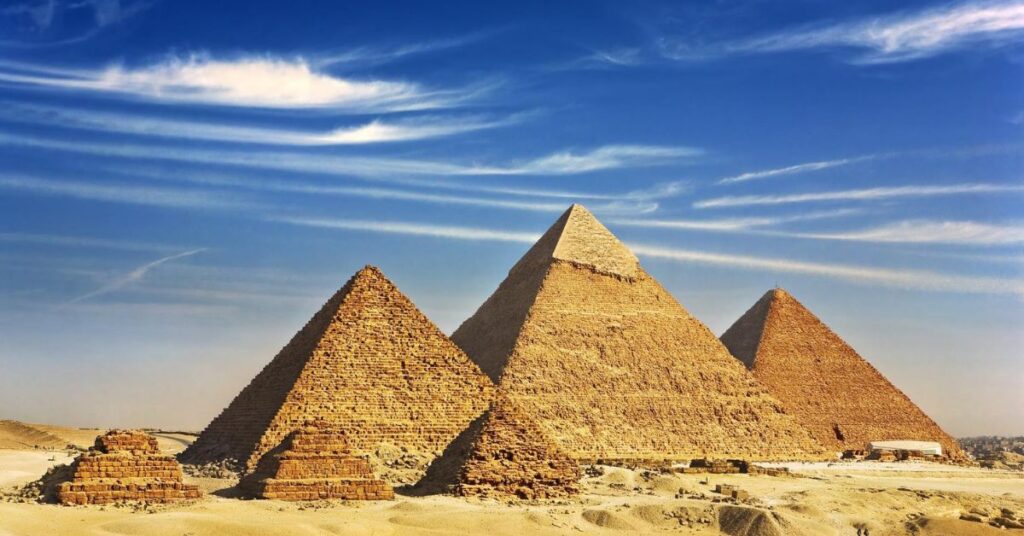
No story of Giza is complete without mentioning the Great Sphinx. Carved from limestone, this colossal statue with the body of a lion and the head of a pharaoh (believed to be Khafre) guards the pyramids.
At 73 meters long and 20 meters high, the Sphinx is one of the largest and oldest statues in the world. Its exact purpose remains debated — was it a guardian figure, a symbol of strength, or a divine representation of the pharaoh?
Mysteries of the Pyramids
Despite centuries of research, the pyramids continue to puzzle historians and scientists. Some enduring mysteries include:
- Hidden chambers: Modern scans suggest there may still be undiscovered rooms within the pyramids.
- Construction techniques: No single theory fully explains how millions of stones were perfectly placed.
- Mathematical precision: The pyramids’ dimensions reflect advanced knowledge of geometry and proportions.
These mysteries fuel endless curiosity and even wild theories, from alien intervention to lost civilizations.
Cultural Significance
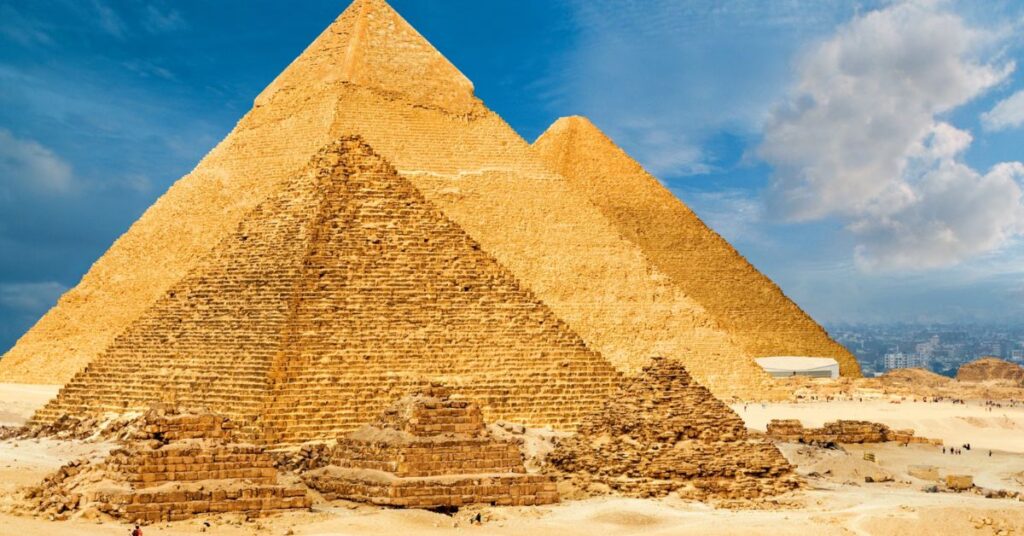
The pyramids are not just ancient tombs—they’re symbols of Egypt’s power, religion, and identity. They represented the ultimate expression of devotion to the gods and showcased the might of the pharaohs.
Today, they are UNESCO World Heritage Sites and serve as powerful reminders of human creativity and determination.
Tourism at the Pyramids
Visiting the pyramids is a bucket-list experience. Located just outside Cairo, the Giza plateau is accessible by car, bus, or even camel.
Tourists can:
- Walk around the base of the pyramids.
- Enter certain chambers (with a ticket).
- Explore the Solar Boat Museum, home to Khufu’s reconstructed funeral boat.
- Marvel at the Sphinx.
- Stay for the sound-and-light show at night, which illuminates the monuments with dramatic storytelling.
With millions of visitors each year, the pyramids remain one of the most visited heritage sites in the world.
Preservation Challenges
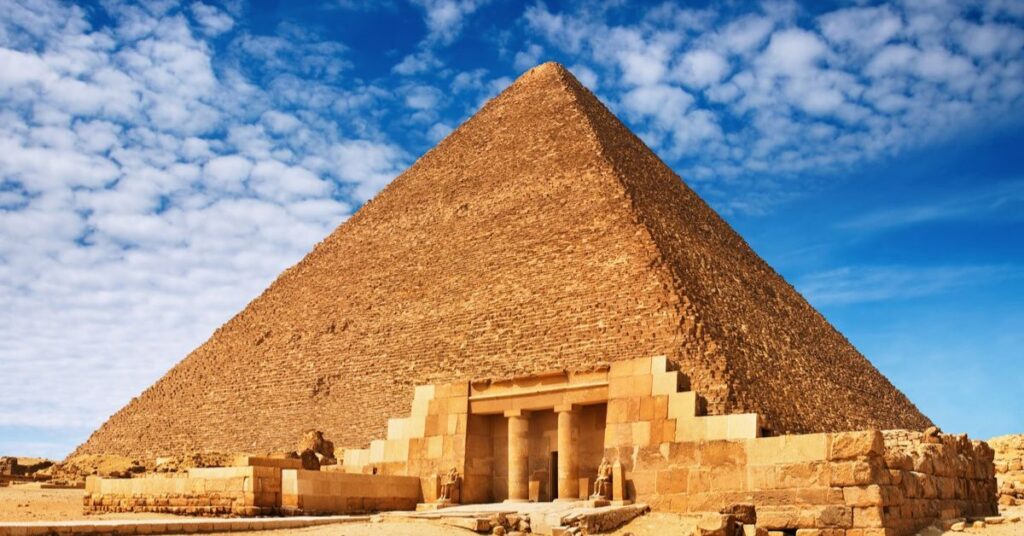
Despite their endurance, the pyramids face modern threats:
- Pollution from Cairo’s expansion.
- Tourism-related wear and tear.
- Climate impacts, including erosion.
Egyptian authorities, alongside UNESCO, work tirelessly on conservation projects to ensure these wonders survive for future generations.
Why the Pyramids Still Inspire Us
The Great Pyramids of Giza stand as more than ancient tombs — they’re symbols of what humanity can achieve with vision, determination, and unity. They connect us to a past where architecture was a spiritual act, not just a functional one.
Even in today’s world of skyscrapers and megastructures, the pyramids remind us that true greatness lies not only in size, but in the stories, beliefs, and mysteries embedded within stone.
Final Thoughts
The Great Pyramids of Giza are more than just archaeological wonders — they’re timeless storytellers. They whisper tales of gods and kings, of human ingenuity and ambition, of life, death, and eternity. Whether you admire them as an engineer, a historian, or simply a dreamer, the pyramids continue to captivate the imagination of millions.
Standing before them, one cannot help but feel humbled — by the past, by the power of belief, and by the incredible


